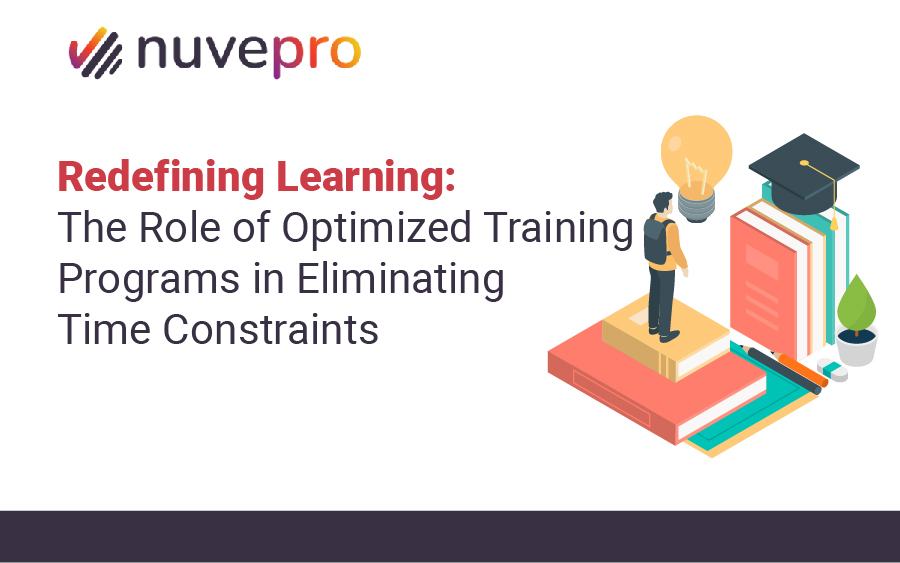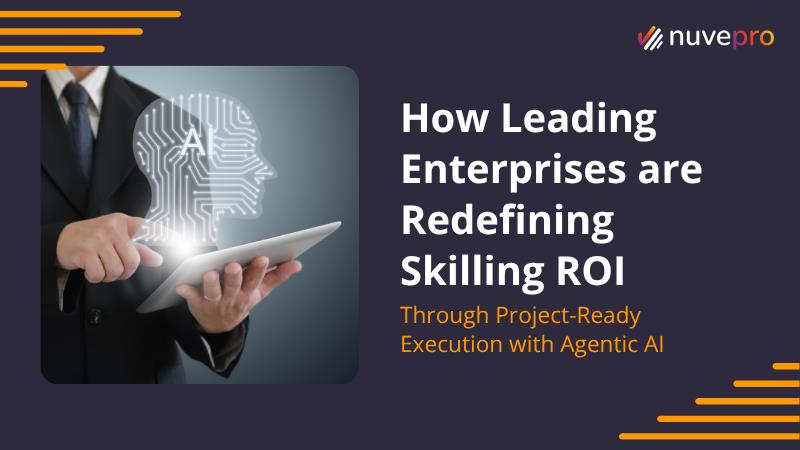In today’s fast-paced world, continuous learning and skill development are more critical than ever. However, traditional training programs often come with significant time constraints, making it difficult for professionals to balance their work responsibilities with their learning needs. At Nuvepro, we believe that optimized training programs can eliminate these constraints, enabling seamless and effective learning experiences. Let’s explore how our innovative approach to training is redefining the learning landscape.
The Challenge of Time Constraints
Time constraints are one of the biggest obstacles to effective learning. Traditional training programs often require participants to be physically present in a classroom, adhering to a fixed schedule. This rigid structure can be challenging for busy professionals who have demanding jobs and personal commitments. As a result, many individuals struggle to find the time to participate in training programs, leading to missed opportunities for skill development and career advancement.
Optimized Training Programs: A New Approach
Optimized training programs are designed to address these challenges by offering flexibility, accessibility, and personalization. At Nuvepro, we have developed a range of hands on training solutions that leverage cutting-edge technology to eliminate time constraints and provide a more effective learning experience.
1. Flexibility through Online Learning
Online hands-on learning platforms have revolutionized the way we approach training and education. By offering hands on courses online, learners can access training materials and complete tasks at their own pace, from any location. This flexibility allows professionals to integrate learning into their busy schedules, making it easier to balance work and study.
2. Flexibility through Web-Based Access
Nuvepro’s training solutions provide web-based access to lab environments, eliminating the need for any local installation. This approach allows participants to access fully functional, pre-configured environments from any location, using only a web browser. It simplifies the setup process and ensures that all learners have access to the necessary tools and resources, regardless of their local hardware or software configurations.
Additionally, for cloud accounts, Nuvepro offers budget management and automated clean-up features. This ensures that participants can focus on their learning without worrying about exceeding budget limits or managing resource clean-up manually. This seamless integration of cloud resources makes it easier for learners to experiment, practice, and develop their skills in a controlled, cost-effective environment.
3. On-Demand Learning Resources
Nuvepro’s training programs include a wealth of on-demand learning resources, such as video lectures, interactive modules, and downloadable materials. These resources are available 24/7, allowing participants to learn at their convenience. Whether it’s early in the morning or late at night, learners can access the materials they need to progress in their training.
4. Personalized Learning Paths
One-size-fits-all training programs are often ineffective because they do not account for individual learning needs and preferences. Nuvepro’s optimized hands on training programs offer personalized learning paths that cater to the unique requirements of each participant. The learning path is tailored to meet the training needs to match the learner’s skill level, learning style, and career goals.
Nuvepro’s Hands-On Approach
Nuvepro is a hands-on learning platform that emphasizes practical experience over theoretical knowledge. Studies show that hands-on learning retains 90% more knowledge compared to theoretical learning. This practical approach not only makes learning more engaging but also more effective, ensuring that learners are well-prepared for real-world challenges.
Flexibility through Ready-to-Use Environments
Nuvepro provides learners with ready-to-use environments that integrate essential software and tools for diverse training needs. These environments eliminate the time-consuming setup process, allowing students to dive straight into hands-on learning. By offering a controlled, secure space where learners can practice in-demand tools, build job-relevant skills, and solve real-world problems under expert guidance, Nuvepro ensures that training is both efficient and effective. This flexibility allows professionals to integrate learning into their busy schedules, making it easier to balance work and study.
Lab-Based Assessments
Nuvepro also offers lab-based assessments to measure students’ practical skills as part of certification requirements. These assessments provide a more accurate evaluation of a student’s abilities, as they focus on their capability to apply knowledge in practical scenarios. This not only boosts confidence but also ensures that students are truly job-ready.
Skill Bundles
Nuvepro’s Skill Bundles offer collections of hands-on labs and real-world projects that help students and learners achieve their academic and career goals through practical, hands-on learning. These bundles are curated to provide a comprehensive learning experience, covering various aspects of a particular skill set or industry. The hands-on nature of these Skill Bundles ensures that learners retain more knowledge and are better prepared for their careers.
Reducing Time Constraints with Practical Learning
By focusing on hands-on learning and providing ready-to-use environments, Nuvepro significantly reduces the time constraints typically associated with traditional training programs. This practical approach allows learners to achieve their learning objectives more efficiently and effectively. Here’s how:
- Immediate Application: Learners can immediately apply what they’ve learned in a practical setting, reinforcing their knowledge and understanding.
- Flexible Scheduling: Online, on-demand resources allow learners to study at their own pace, fitting their education into their busy schedules.
- Enhanced Retention: Hands-on learning ensures that learners retain more information, reducing the need for repetitive study and review.
- Job-Ready Skills: By focusing on real-world applications and practical skills, learners are better prepared for their careers, reducing the time needed to get up to speed once they enter the workforce.
Conclusion: Embrace the Future of Learning with Nuvepro
As technology continues to evolve, so too will the capabilities of Nuvepro’s training solutions. We are committed to staying at the forefront of these advancements, continually enhancing our platform to meet the changing needs of our clients. In a world where time constraints often hinder learning and development, optimized training programs offer a solution. By providing flexibility, accessibility, and personalization, Nuvepro’s innovative hands on training solutions are eliminating the barriers to effective learning. Whether you are an individual looking to advance your career or an organization seeking to enhance employee performance, our optimized training programs can help you achieve your goals.
Embrace the future of learning with Nuvepro, and discover how our hands on training solutions can transform your approach to professional development. With the right tools and resources, you can overcome time constraints and unlock your full potential.




